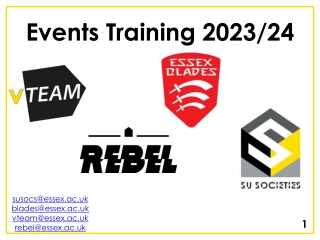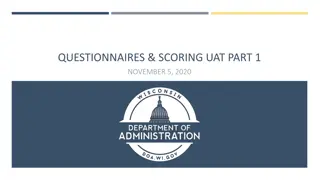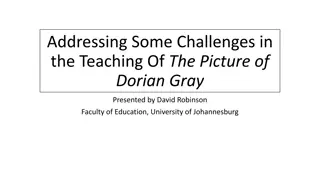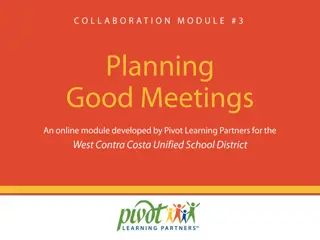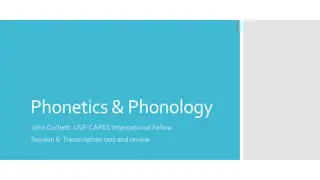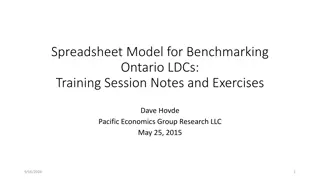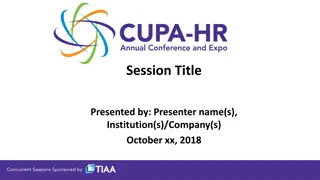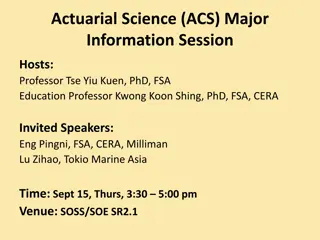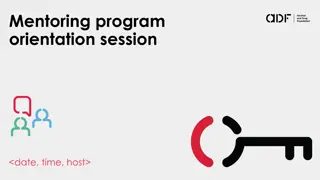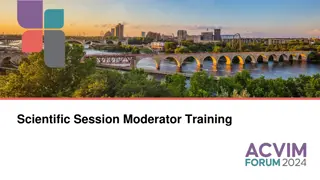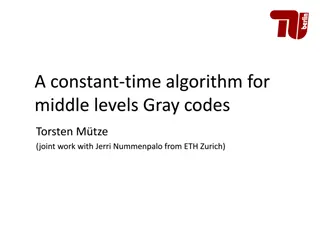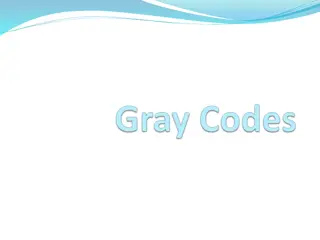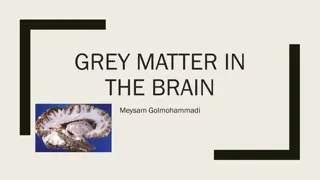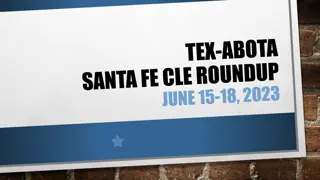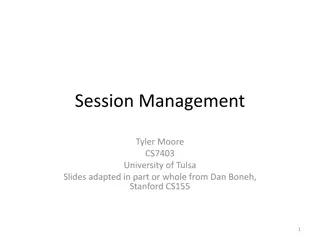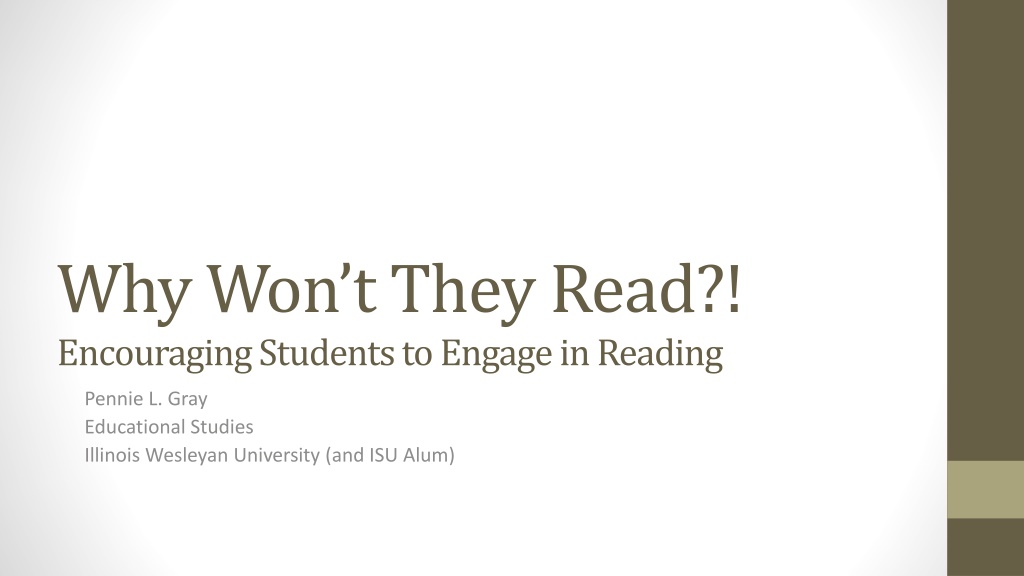
Encouraging Students to Engage in Reading Insights
Discover insights on engaging students in reading, from issues with reading habits to poll results on student reading completion rates and preferences. Gain perspectives from instructors and students on assigned reading completion varying by class and text density.
Download Presentation

Please find below an Image/Link to download the presentation.
The content on the website is provided AS IS for your information and personal use only. It may not be sold, licensed, or shared on other websites without obtaining consent from the author. If you encounter any issues during the download, it is possible that the publisher has removed the file from their server.
You are allowed to download the files provided on this website for personal or commercial use, subject to the condition that they are used lawfully. All files are the property of their respective owners.
The content on the website is provided AS IS for your information and personal use only. It may not be sold, licensed, or shared on other websites without obtaining consent from the author.
E N D
Presentation Transcript
Why Wont They Read?! Encouraging Students to Engage in Reading Pennie L. Gray Educational Studies Illinois Wesleyan University (and ISU Alum)
Invisible Reading Reading is often overlooked (because it s invisible): Writing weaknesses are overt Reading weaknesses are covert Receptive Language Expressive Language
Informal (Admittedly Unscientific) Poll of Instructors How many pages of reading do you assign students per week? On a scale from 1 to 10, how dense is the text you ask students to read? What percentage of the reading do you think students complete?
Informal (Admittedly Unscientific) Poll of Students How much of the assigned reading do you actually do?
Students How much of the assigned reading do you actually do? It depends. . . Depends on the class. In a literature class, like 90%.
Students How much of the assigned reading do you actually do? It depends. . . Depends on the class. In a literature class, like 90%. Smaller chunks I will read, but if it s too much, I just skim.
Students How much of the assigned reading do you actually do? It depends. . . Depends on the class. In a literature class, like 90%. Smaller chunks I will read, but if it s too much, I just skim. More than four pages might be a skim unless it s a really interesting.
Students How much of the assigned reading do you actually do? It depends. . . Depends on the class. In a literature class, like 90%. Smaller chunks I will read, but if it s too much, I just skim. More than four pages might be a skim unless it s a really interesting. If it s too much, you have consider your other obligations and prioritize what you do.
Students How much of the assigned reading do you actually do? It depends. . . Depends on the class. In a literature class, like 90%. Smaller chunks I will read, but if it s too much, I just skim. More than four pages might be a skim unless it s a really interesting. If it s too much, you have consider your other obligations and prioritize what you do. An unmanageable amount is 110 pages a night; Even 20 is a lot of pages for one class, so more than that won t get read.
Students How much of the assigned reading do you actually do? It depends. . . Depends on the class. In a literature class, like 90%. Smaller chunks I will read, but if it s too much, I just skim. More than four pages might be a skim unless it s a really interesting. If it s too much, you have consider your other obligations and prioritize what you do. An unmanageable amount is 110 pages a night; Even 20 is a lot of pages for one class, so more than that won t get read. But some classes require you to read it thoroughly. 12 pages is OK, but after 10, I skim. If it s dull, I won t finish it.
Students What can your professors do to encourage you to read?
Students What can your professors do to encourage you to read? Class discussion of readings (and a discussion grade)
Students What can your professors do to encourage you to read? Class discussion of readings (and a discussion grade) Assign reading facilitators (Jigsaw)
Students What can your professors do to encourage you to read? Class discussion of readings (and a discussion grade) Assign reading facilitators (Jigsaw) I don t want to let the professors down.
Students What can your professors do to encourage you to read? Class discussion of readings (and a discussion grade) Assign reading facilitators (Jigsaw) I don t want to let the professors down. That s what the first two weeks of class establish--how important it is to do the readings. Midterms can be a wake up call.
Students What can your professors do to encourage you to read? Class discussion of readings (and a discussion grade) Assign reading facilitators (Jigsaw) I don t want to let the professors down. That s what the first two weeks of class establish--how important it is to do the readings. Midterms can be a wake up call. It s hard when there s no alignment between what we re reading and what we are talking about in class.
Students What can your professors do to encourage you to read? Class discussion of readings (and a discussion grade) Assign reading facilitators (Jigsaw) I don t want to let the professors down. That s what the first two weeks of class establish--how important it is to do the readings. Midterms can be a wake up call. It s hard when there s no alignment between what we re reading and what we are talking about in class. In some instances, we have to reread. Having guided notes or a pre- reading session before the reading would be helpful with denser readings.
Students What can your professors do to encourage you to read? Discuss the readings in class (and a discussion grade) Assign reading facilitators (Jigsaw) I don t want to let the professors down. That s what the first two weeks of class establish--how important it is to do the readings. Midterms can be a wake up call. It s hard when there s no alignment between what we re reading and what we are talking about in class. In some instances, we have to reread. Having guided notes or a pre-reading session before the reading would be helpful with denser readings. It might help to have a glossary of certain terms before we read pre-teaching might encourage students to do the reading because they have guidance and a structure to understand the readings. (e.g., postmodern)
Results from (Admittedly Unscientific) Poll: Students don t complete readings due to: Perceived lack of time Lack of interest in the content Not understanding the relevance of the content Lack of disciplinary reading and literacy skills When I asked, How do you read differently in the various disciplines? Crickets. We can t do anything about the first reason, but we might be able to do something about the other three.
Furthermore: Students may not realize: That reading well isn t necessarily reading quickly; That we change how we read depending on the discipline and genre; That reading ten pages in one discipline is not the same as ten pages in a different discipline. Text structure anecdote: What s an edited text?
Vicious Cycle Lecture over readings Students perceived as poor readers Students don t see need to read Students skim readings Bean, 2008, p. 168
Overview Disciplinary Literacy Two Pronged Approach Using strategies Developing Mindfulness My successes (and failures) Resources An assignment (for the particularly ambitious) Questions/Comments
Disciplinary Literacy Intermediate Literacy (fluency, more sophisticated comprehension, schema expansion, lexicon development) Basic Literacy (decoding + basic comprehension) Shanahan and Shanahan, 2008, p. 44
More Specific, Less Generalizable Disciplinary Literacy Intermediate Literacy Basic Literacy Less Specific, More Generalizable Shanahan and Shanahan, 2008, p. 44
More Specific, Less Generalizable Less Instruction Time Disciplinary Literacy Reading is not inoculation. Intermediate Literacy More Instruction Time Basic Literacy Less Specific, More Generalizable Shanahan and Shanahan, 2008, p. 44
Disciplinary Literacy Variances Lexicon in the discipline: What vocabulary is used and how (e.g., plot) Structure of an argument or rhetorical structure: What is compelling or persuasive? Approach to truth or facts: What is known and how? Relevance: What matters within the discipline and why? Audience: Who cares? Reading Strategy Variance: Mathematics: close reading and re-reading Chemistry: visualizing, writing down formulae, moving between graphs and charts and text History: focus on author/source/date/bias How much of this are we aware of? How much of this do we teach students? Disciplinary Literacy Shanahan, T. & Shanahan, C. (2008). Teaching disciplinary reading to adolescents: Rethinking content area literacy. Harvard Educational Review, 78(1), 40-59.
Disciplinary Literacy as a Gatekeeper Disciplinary literacy is the vehicle by which a discipline advances knowledge, but it is also a gatekeeper that protects the hegemony of the discipline a Discourse that keeps some in and some out (Gee). How might we unveil for students how literacy functions within our disciplines to let them in?
What does our disciplinary reading look like to students? Daniels, H., & Zemelman, S. (2004). Subjects matter: Every teacher s guide to content-area reading. Portsmouth, NH: Heinemann.
Prong I: Disciplinary Reading Approaches I m proposing a two-pronged approach: Prong I: Teach explicitly disciplinary reading strategies Prong II: Teach metacognition so students know when those strategies are and are not working (i.e., mindful reading from Carillo, 2015) Note: This is not about reading remediation for struggling readers that s a different presentation.
Awareness of Deep vs Surface Reading/Thinking https://cft.vanderbilt.edu/wp-content/uploads/sites/59/Bloomtaxonomy.jpg Roberts and Roberts in Bean, 2008.
What can you do? Teach (explicitly) disciplinary literacy: thinking, reading, speaking, writing
What else can you do? Teach (explicitly) disciplinary literacy: thinking, reading, speaking, writing Consider developing a How to read like a(n) _________ handout for students (see Concepcion, 2004, for an example)
What else can you do? Teach (explicitly) disciplinary literacy: thinking, reading, speaking, writing Consider developing a How to read like a(n) _________ handout for students (see Concepcion, 2004, for an example) Pre-teach: Predefine unknown terms and concepts
What else can you do? Teach (explicitly) disciplinary literacy: thinking, reading, speaking, writing Consider developing a How to read like a(n) _________ handout for students (see Concepcion, 2004, for an example) Pre-teach: Predefine unknown terms and concepts Set up a jigsaw
What else can you do? Teach (explicitly) disciplinary literacy: thinking, reading, speaking, writing Consider developing a How to read like a(n) _________ handout for students (see Concepcion, 2004, for an example) Pre-teach: Predefine unknown terms and concepts Set up a jigsaw Set an active goal for the reading what will they do with the content? Participate in discussion Facilitate discussion Summarize Contribute to the Message Board
What else can you do? Help students understand the relevance of the reading.
What else can you do? Help students understand the relevance of the reading. Access prior knowledge (schema): How is this like that? Make connections.
What else can you do? Help students understand the relevance of the reading. Access prior knowledge (schema): How is this like that? Make connections. Consider being more selective with readings: How much do they need to read?
What else can you do? Help students understand the relevance of the reading. Access prior knowledge (schema): How is this like that? Make connections. Consider being more selective with readings: How much do they need to read? Tell students how to approach each reading: Skim this part, study this part, review this part
What else can you do? Help students understand the relevance of the reading. Access prior knowledge (schema): How is this like that? Make connections. Consider being more selective with readings: How much do they need to read? Tell students how to approach each reading: Skim this part, study this part, review this part Demonstrate how you read (e.g., varying reading rate, re-reading, asking questions, marking the text, taking notes, practicing self-awareness of comprehension--Daniels and Zemelman, 2004, pp. 24-25)
What else can you do? Help students understand the relevance of the reading. Access prior knowledge (schema): How is this like that? Make connections. Consider being more selective with readings: How much do they need to read? Tell students how to approach each reading: Skim this part, study this part, review this part Demonstrate how you read (e.g., varying reading rate, re-reading, asking questions, marking the text, taking notes) Dissect an article together in class
What else can you do? Help students understand the relevance of the reading. Access prior knowledge (schema): How is this like that? Make connections. Consider being more selective with readings: How much do they need to read? Tell students how to approach each reading: Skim this part, study this part, review this part Demonstrate how you read (e.g., varying reading rate, re-reading, asking questions, marking the text, taking notes) Dissect an article together in class Teach signal words (e.g., therefore, however, in fact, still)
What else can you do? Help students understand the relevance of the reading. Access prior knowledge (schema): How is this like that? Make connections. Consider being more selective with readings: How much do they need to read? Tell students how to approach each reading: Skim this part, study this part, review this part Demonstrate how you read (e.g., varying reading rate, re-reading, asking questions, marking the text, taking notes) Dissect an article together in class Teach signal words (e.g., therefore, however, in fact, still) Create curiosity (see Bean, p. 172)
What can students do? Create concept map as they read showing relationships between concepts Clicks/Clunks (What clicked and what clunked in the reading?) Before and After (Have students record what they think the reading might be about before they read and then record their new understandings) What It Says and What It Does: Students keep two columns for each paragraph or section telling what the section says (summary) and what it does (function) (McGraw Center on Teaching and Learning and Bean, p. 170)
What can students do? Pose their own questions prior to reading, individually or as a class KWLQ (Know/Wonder/Learned/Questions that remain) Before/After/Outcome: (see Bean, p. 174) Before I read this, the author assumed I. . . After I read this, the author wanted me to believe. . . The author was/was not successful in changing my view Maintain a Google Doc with key questions they respond to as they read (or after reading as class discussion).
Prong II: Mindful Reading & Metacognition New interest in and research into reading as part of the work of writing centers See Pedagogy s January 2016 issue (Adams, Carillo, Kalbfleisch, Lockhart & Soliday) Writing tutors often have to refer back to readings to help students with their writing Recall: receptive language precedes expressive language
Mindful reading & Metacognition Carillo advocates for students to be knowledgeable, deliberate, and reflective about how they read and the demands that contexts place on their reading (emphasis added, p. 11). Mindful reading describes a particular stance on the part of the reader, one that is characterized by intentional awareness of and attention to the present moment, its context, and one s perspective (p. 11). Knowledgeable: Know the strategies that are available to them Deliberate: Use intentionally those strategies Reflective: Practice awareness of the effectiveness of those strategies
Teaching Mindfulness & Metacognition Reading rhetorically (Bean): 1. What questions does the text address, explicitly or implicitly? 2. Who is the intended audience? 3. How does the author support his or her thesis with reasons and evidence? 4. How does the author hook the intended reader s interest and keep the reader reading? 5. How does the author make himself or herself seem credible to the intended audience? 6. Are this writer s basic values, beliefs, and assumptions similar to or different from my own? 7. How do I respond to this text? 8. How do this author s evident purposes for writing fit with my purposes for reading? (10) However, we must also know when these questions or strategies are no longer working. How? Through mindfulness (Carillo pp. 12-13).
Teaching Mindfulness & Metacognition Reading Journals (Carillo, 2016, p. 19): Which reading approach will I employ first and why? How far does this reading approach take me? What does this reading approach allow me to notice in the text? What must I ignore? What meanings does this approach allow me to construct and what meanings does it prohibit? And then: At what point in the reading and why did I need to abandon my initial approach? Why did the initial approach take me only so far? What does this tell me about the approach, as well as about me as a reader? What other approaches do I need to bring into play in order to construct a meaning that achieves the goals associated with my reading/writing assignment? To what extent might this reading experience be useful as I read texts in my other courses? (Transfer)
Adams reading inventory (p. 84) I enjoy reading (check all that apply): I struggle or avoid reading (check all that apply): Before I read for a course, I (check all that apply): While I read for a course, I: When I come across an unfamiliar word or phrase, I: After I read something for a course, I: On average, it takes me _____ to read a typical book chapter or article (25 pages): I believe good readers: What jumps out at me about my own reading: Developed for Writing Tutors, but would be useful for all students to raise mindfulness and metacognition.

